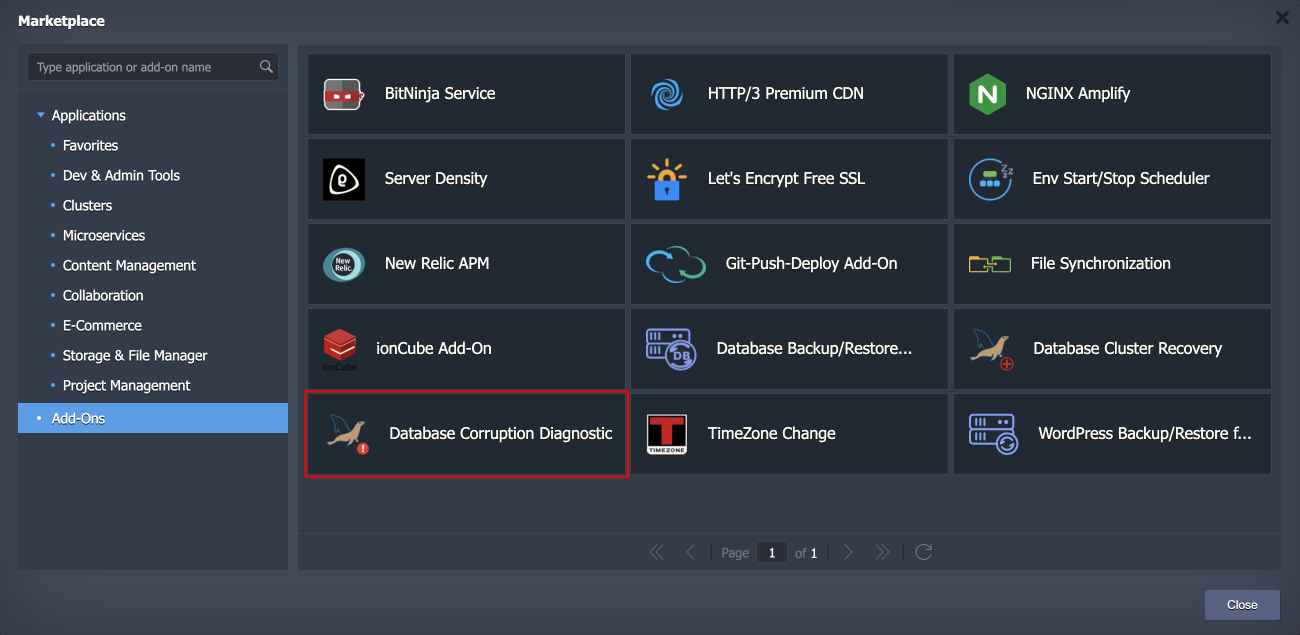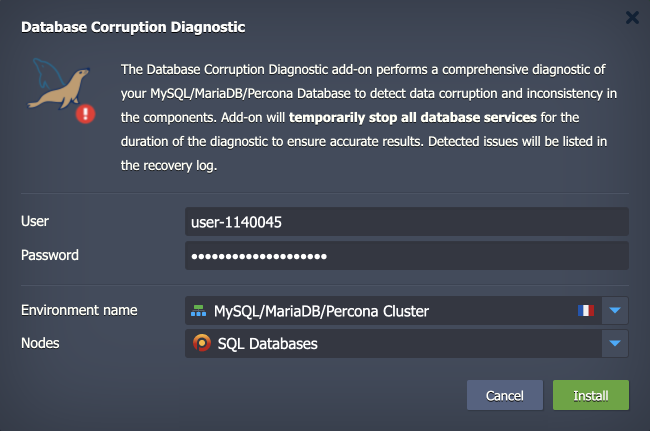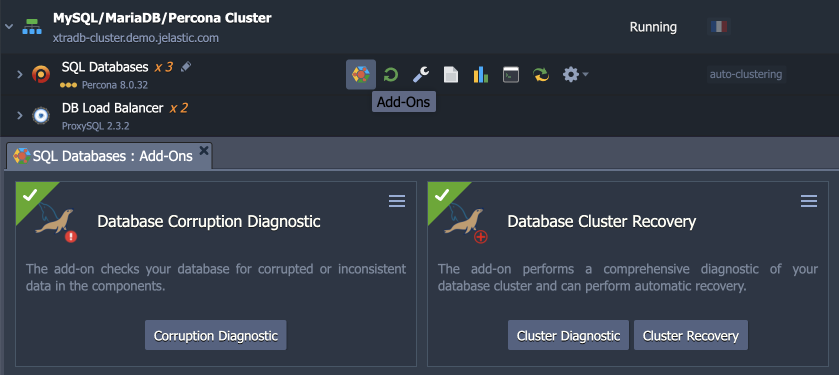MySQL/MariaDB/Percona Corruption Diagnostic Add-On
The Database Corruption Diagnostic add-on is available for all the MySQL/MariaDB/Percona databases (including cluster topologies) and can perform diagnostics to detect file corruption. It checks the integrity of the cluster’s indexes, tables, and databases.
The list of supported stacks for corruption diagnostic:
- Standalone MariaDB/MySQL/Percona stacks
- Primary-Secondary Cluster based on MariaDB/MySQL/Percona stacks
- Primary-Primary Cluster based on MariaDB/MySQL/Percona stacks
- Galera Cluster based on MariaDB stack
- XtraDB Cluster based on Percona stack
Add-On Installtion
The add-on can be installed either automatically along with database cluster installation or manually from Marketplace.
1. Go to the Add-Ons section in the Marketplace and pick the Database Corruption Diagnostic add-on.

2. In the opened installation window, provide the required data:
- User and Password - the database admin user credentials
- Environment name - select an environment with the required database cluster from the list
- Nodes - choose a layer with the database cluster

Click Install and wait a minute for the add-on to be installed.
Add-On Usage
1. You can find the Database Corruption Diagnostic add-on under the Add-On tab for the database layer.

2. Click the Corruption Diagnostic button to run the diagnostic for your database.

3. In a few minutes, you’ll see the diagnostic result in the pop-up notification with a link to the /var/log/db_recovery.log file with more details.

In case of detecting corrupted data, it is recommended to restore your database from a backup. You can use the Backup/Restore add-on to schedule regular backup creation, ensuring you always have a backup to restore your database in case of an emergency.